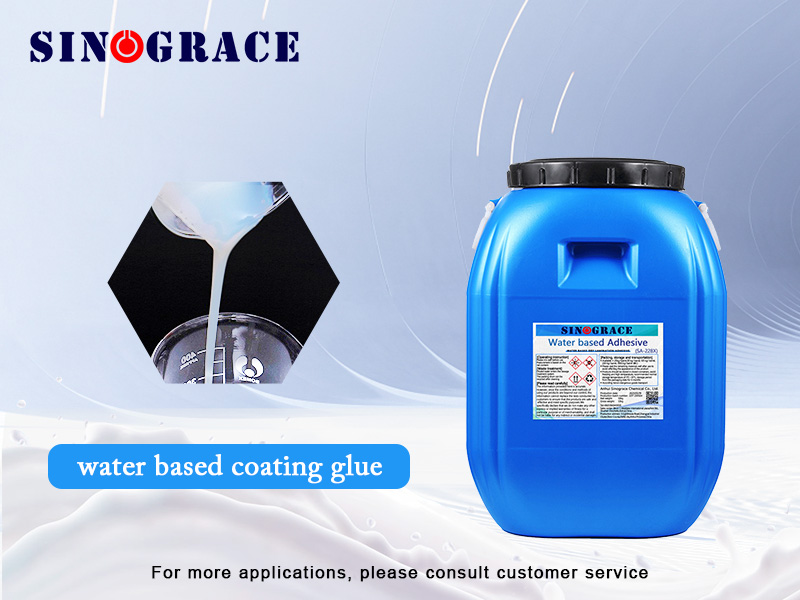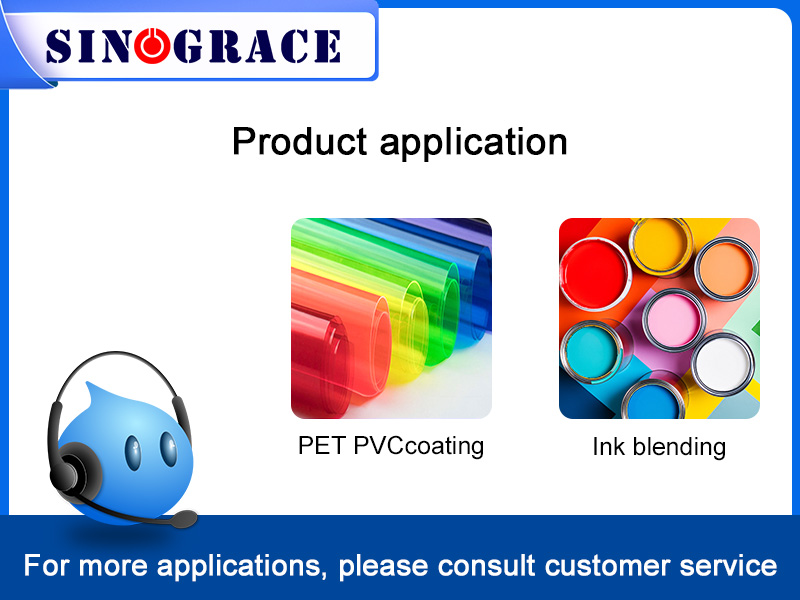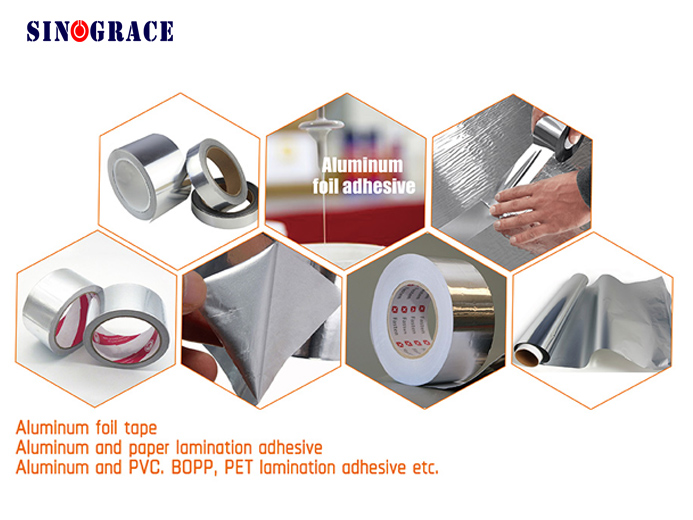
2023-10-18
Depending on the coating material used, the type of coating is also different. PVDC coating, PVOH coating, silicon oxide (Si0x) coating, Acrylic (Acrylic) coating these four kinds of plastic coating characteristics and applications are introduced. According to the different coating materials used, plastic coating mainly has the following types: 01/PVDC coating PVDC emulsions can be coated in several ways, depending on the characteristics of the substrate and equipment conditions.In cases where precise measurement is not required, reverse roll coating is often used.In cases where more accurate coating amounts are required, air knife coating or wire winding bar coating should be used. The former has no physical contact with the substrate during the coating process and can be used at high speeds. The latter is easier to operate, but only suitable for lower speeds. According to coating online understanding, PVDC coating is generally in the range of 1.5~3.0g/㎡. A coating volume lower than the above recommended value may reduce the barrier, while a coating volume higher than the above recommended value does not necessarily improve the barrier. Can be coated on one side, can also be coated on both sides, the base material can use bidirectional stretching polypropylene film, bidirectional stretching polyester film, aluminum foil, paper, etc. A variety of different barrier films are made according to the choice of use. PVDC emulsions can be used to coat paper, cellophane, PP, PET, PE and nylon for packaging applications including fast food, cheese, meat and pharmaceuticals. PVDC coatings have excellent barrier properties and very low oxygen, odor and moisture transmittance. PVDC coating also has good heat sealing, oil resistance, solvent resistance, wear resistance, softness, gloss and flame retardant. However, the PVDC coating layer also has disadvantages, its composite material is not stable enough at low temperatures, and its substrate and finished product should be kept in a room temperature environment with a relative humidity of about 50%. 02/PVOH coating PVOH is a type of polyvinyl alcohol coated on the packaging film, which provides special oxygen barrier properties for packaging. It's very foggy. It's not yellow. It has excellent optical properties. The reverse concave roll coating method is adopted. Before PVOH coating, it is necessary to apply the primer for optimal coating strength. The PVOH coating should be included in the middle of the composite layer to protect the coating from moisture, as once damp, the oxygen barrier of PVOH will be reduced. 03/ Silicon oxide (si0x) coating The silica/silica coating on the packaging material can obtain a similar barrier property to aluminum foil. It is often referred to as a "glass" coating because silicon is the main ingredient in the manufacture of glass containers. The silicon coated film has excellent barrier property and good brightness. These coatings are intended to replace aluminum foil composit...
read more
2023-10-17
The allocation of ink hue is an important work before printing, and it is also a very abstract work.Simple color materials three primary colors, yellow, magenta, green can be deployed into red, orange, yellow, green, blue, purple and other dozens of colors. In the actual deployment process, only by the three primary colors of ink can not get the required color, this is because the ink manufacturers selected pigments, dyes simply can not meet the international standard of the three primary colors saturation, color concentration, brightness, etc., the third grade of the original color ink can only be tea gray, rather than black. Therefore, inks and auxiliaries such as black ink, white ink and diluent can not be separated from the actual color mixing process. (1)Ink mixing process 1.Master the used ink system, color, color saturation, viscosity, fineness and other indicators. 2.The sample and customer requirements, process requirements, color requirements, ink use requirements for verification, each color group color order arrangement, product print number, ink dosage, the deployment of the main tone to in-depth understanding. 3.The diluent is related to the solubility of the ink resin, the temperature deviation and the ratio of the diluent, such as the temperature is high, the diluent should be slow dry. At the same time, the dissolution effect and volatilization rate also play a very important role in the printing quality of the product, so the appropriate diluent should be selected according to the relevant conditions. 4.Preparation of ink and diluent should be done before printing. 5.In the short time of startup overprinting, it is necessary to make proper use of the original color ink according to the color match, and grasp the proportion, and adjust the hue of each color group of ink according to the proof, so that the printing speed is stable, and a little adjustment can achieve the proof effect. In normal printing, the batch control color is the same, it is more difficult for ink mixing personnel, such as the amount of diluent added to affect the color effect to different degrees, which requires ink mixing personnel to have a strong sense of responsibility. (2)Notes for mixing ink 1.In the case that the tone meets the requirements, the fewer color types of ink used, the easier to deploy and control. Can use intercolor ink do not use multi-color ink, according to the subtractive method, the more color used in the spot color ink its saturation will be lower, the black component will increase accordingly. 2.Confirm the main tone and the auxiliary tone of the printed matter, the main tone ink as the basic ink, other inks as the toning ink, the basic ink as the main ink, the toning ink as the auxiliary, so that the deployment of spot color ink will be faster and more accurate. 3.When mixing proofing and sample inks, try to use the same paper as the paper used for printing, because the color of the ink will change with the difference in paper abso...
read more
2023-10-13
Viscosity is an important index of ink rheology.In printing, a certain viscosity is the main condition to ensure the normal transfer and uniform transfer of ink.It is related to whether the printing process can proceed smoothly, and directly affects the uniformity, clarity and gloss of the imprinting ink, and also relates to the viscosity, fluidity, yield value, thixotropy, drawing and other properties of the ink, which is one of the important printability of the ink. There are many types of printing forms and prints, and their requirements for ink viscosity are different: Lithography requires high viscosity of ink, dynamic viscosity of 10 ~ 80 Pa·s; Intaglio and flexographic printing requires low ink viscosity, the viscosity of plastic gravure ink is 0.02 ~ 0.2 Pa·s, the viscosity of publication gravure ink is 0.01 ~ 0.1 Pa·s, the viscosity of solvent-based flexible ink is 0.09 ~ 0.15 Pa·s, and the viscosity of water flexible ink is 0.15 ~ 0.3 Pa·s. Because of the low viscosity of gravure and flexographic inks, a Chon cup is often used to measure viscosity in printing. The faster the printing speed, the lower the viscosity of the ink is required, so as to meet the needs of high-speed printing. For example, the viscosity of 6 000 printing/hour offset printing ink is appropriate to 20 ~ 50 Pa·s. The viscosity of 20 000 printing/hour rotary ink is appropriate to 10 ~ 30 Pa·s, and even sometimes should be lower than 10 Pa·s. When the structure of paper is loose and the surface strength is low, the viscosity of ink is required to be low. The structure of the paper is tight, the surface strength is high, and the viscosity of the ink can be slightly higher. If the ink used in newsprint printing, its viscosity should be lower than the ink used in offset printing. The printing of network cable plate and character line plate requires the viscosity of the ink to be higher, and the viscosity of the ink to be lower for field printing. In wet press dry stack printing, the viscosity of the overprint color ink is required to be higher than the viscosity of the base color ink, so as to ensure the clarity of the printing and the combination of the overprint color ink and the base color ink is more firm. In the four-color machine wet continuous printing, in order to ensure that the base color ink can be stably attached to the surface of the substrate and does not fall off during overprinting, the viscosity of the overprinting color ink should be lower than the viscosity of the base color ink. Generally speaking, the viscosity of various colors of inks should be reduced from the first color in the color order, so as to ensure the normal overprinting between each color ink layer. Ink viscosity does not meet the printing requirements will cause a lot of failures. When the viscosity of the ink is too large, the drawing property is strong. During the ink transfer process, when splitting between ink rollers, the end of the filament is easy to cause free ink droplets to ...
read more
2023-10-12
The preparation of ink is an important work in the color printing process, which is directly related to the printing quality of the product. Because the color is bright and the brightness is good, the hue is accurate is the basic requirement of the color printing products, to achieve this requirement must first accurately deploy the printing ink. Therefore, the operator must master the color knowledge and ink mixing process. Mixing of dark and light inks The deployment of ink can be divided into dark ink and light ink deployment. The so-called dark ink refers to: only the primary color ink is prepared without adding any diluent. According to the amount of ink required for printing, the main color ink and the auxiliary color ink determined by color analysis are blended together. The deployment of dark ink is divided into three kinds: monochrome, intercolor and compound color. Monochrome refers to a primary color 1 composed of ink. Intermediate color refers to: composed of two primary colors of ink. Compound color refers to the mixing of three kinds of ink. Any ink that is prepared by adding diluent is called light-colored ink, and three points should be noted when deploying: 1.Use white ink without diluent; 2.when the color is mainly white ink, add a little color ink to the white ink; 3.the color selection should be accurate It is necessary to master the change law of the three primary colors in order to achieve accurate ink allocation Any color can be mixed using different proportions of the three primary colors. The color change of ink is the use of this law. For example: 1.Three primary color ink can be mixed into black (approximate). 2.The three primary colors of ink equal mixing and adding different proportions of white ink, can be matched into a variety of different shades of light gray ink. 3.The three primary colors of ink with various proportions of mixing, can be deployed into a variety of different colors of the intermediate color or compound color, but its color tends to a large proportion of the primary color. 4.Two kinds of original color ink after equal mixing, can become the standard intercolor; After the two primary colors are mixed and blended in different proportions, they can be matched into a variety of secondary colors with different hues, but their hues tend to be the primary colors with large proportions. 5.Any color of ink, adding white ink after its hue appears brighter. When black ink is added, the hue becomes darker. The above primary color ink deployment into a variety of colors is based on the subtractive theory of the three primary colors. When mixing ink, we should first analyze the hue of the color draft, and use the complementary color theory to correct the color deviation and improve the setting effect When receiving the printed manuscript, we should first carefully appreciate and analyze the various colors in the original manuscript, and weigh the proportion of the ink hue to be adjusted. The analysis of color i...
read moreCopyright © 2015-2024 Anhui Sinograce Chemical Co., Ltd..All Rights Reserved.powered by dyyseo.com
top